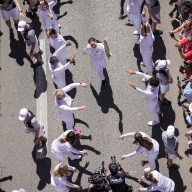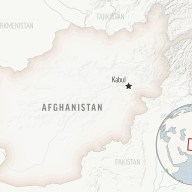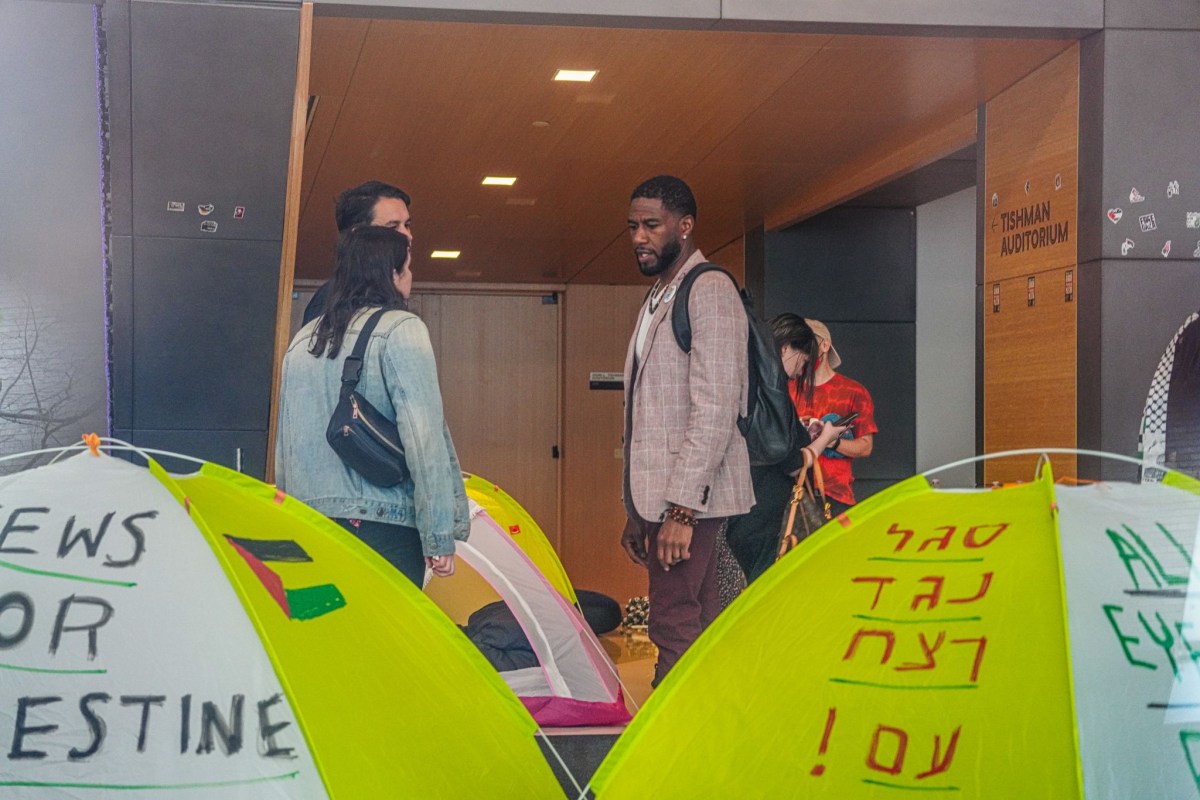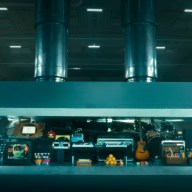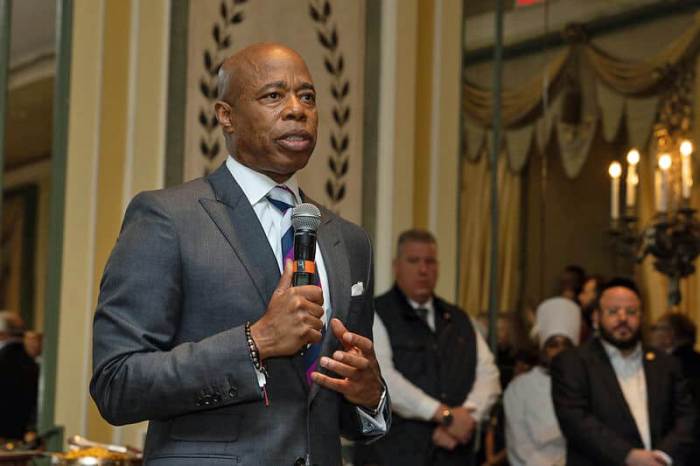The gridlock and commuter chaos that many had expected during yesterday’s afternoon traffic rush failed — for the most part — to materialize during the first day of a trial that removed one traffic lane from the Burrard Street Bridge.
“Today was a real test,” said Mayor Gregor Robertson during a media scrum in the midst of the afternoon rush. “A lot of people were expecting it to be a disaster, and it hasn’t been that way at all. In fact, I think it’s been the opposite. It’s been a smooth day.”
The $1.5-million trial removed one of the three traffic lanes heading to Kitsilano from the Downtown to make the commute safer for cyclists by creating two bicycle lanes.
As expected, traffic in the morning seemed unaffected. The real crunch was expected in the afternoon, when tens of thousands of commuters would try to squeeze home across the remaining two southbound lanes.
From about 4:30 to 6 p.m., traffic appeared to be flowing freely from Burrard Street onto the bridge. The same, however, could not be said for traffic coming out of the West End.
Motorists heading onto the bridge from English Bay were lined up for blocks down Pacific Avenue, waiting to merge and pass through a one-lane bottleneck.
“We’ll definitely be looking at it in these initial days to see where the pinch points are and see if we can flow the traffic more smoothly,” Robertson said. “Pacific at Thurlow, Pacific at Hornby are the spots where there always have been issues and those continue with the bike lanes.”
The Burrard bridge, which opened in 1932, is scheduled to undergo $30 million in repairs after the 2010 Olympics. At that time, the city is expected to look at various options, including widening the existing sidewalks for an additional $30 million or building a separate pedestrian/cyclist bridge, which could cost in the order of $100 million.
Vision Coun. Heather Deal, who rode across the bridge this morning, said if the trial works, it could represent permanent savings for taxpayers.
“If people can figure this out and make it successful, then we’ve saved the taxpayers $30 million,” Deal said.
In 1996, a similar six-month lane-reallocation trial on the bridge was scrapped after one week because of public outcry.
About $250,000 of the $1.5 million the city spent on the trial is devoted to a communications plan to get commuters to consider the underutilized Granville Street Bridge as an alternative route.
“It’s hard to know what have been the ingredients to success,” Robertson said. “But definitely, people have chosen not to drive the bridge today, and that has helped make it a success.”




